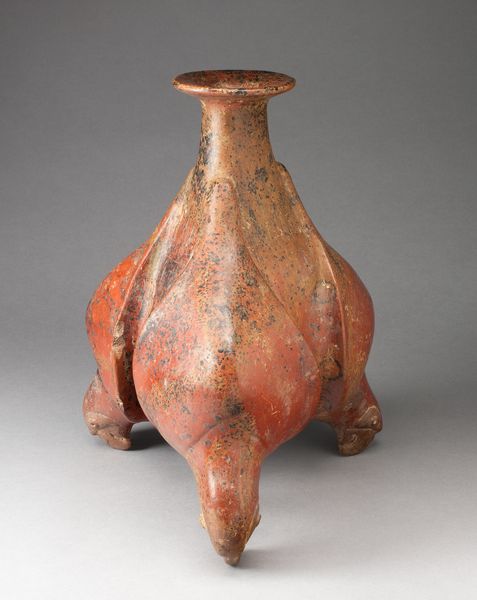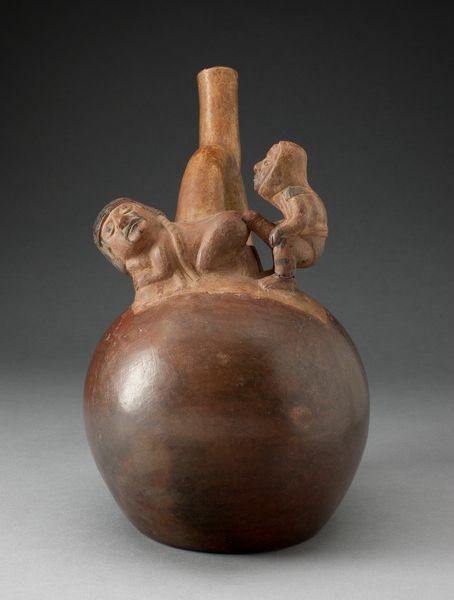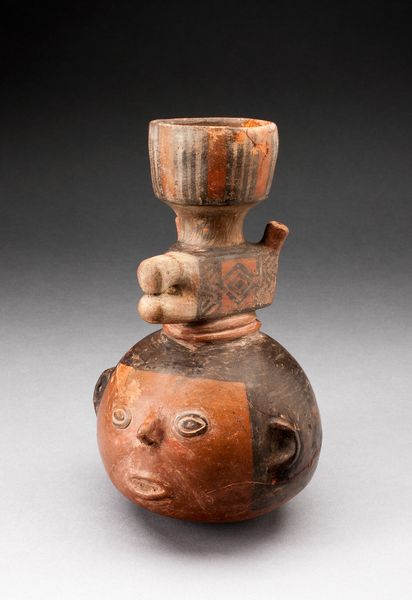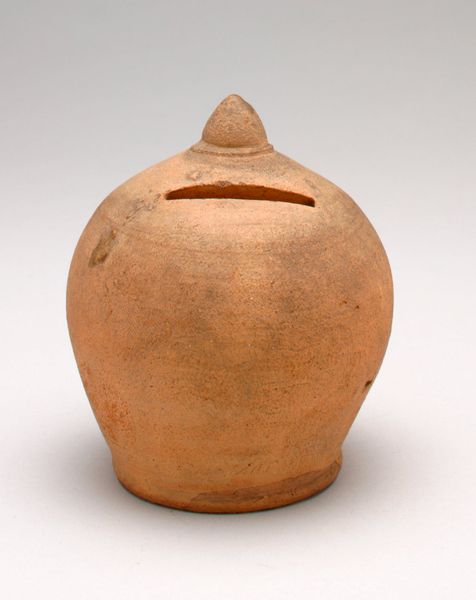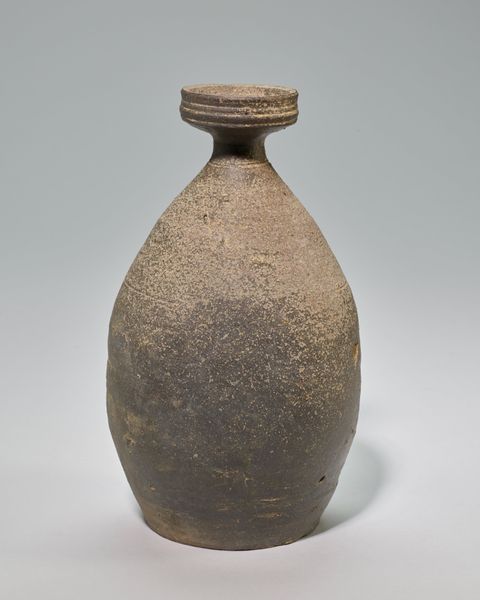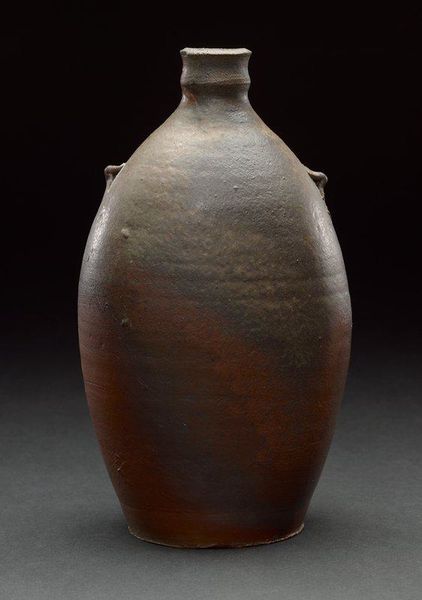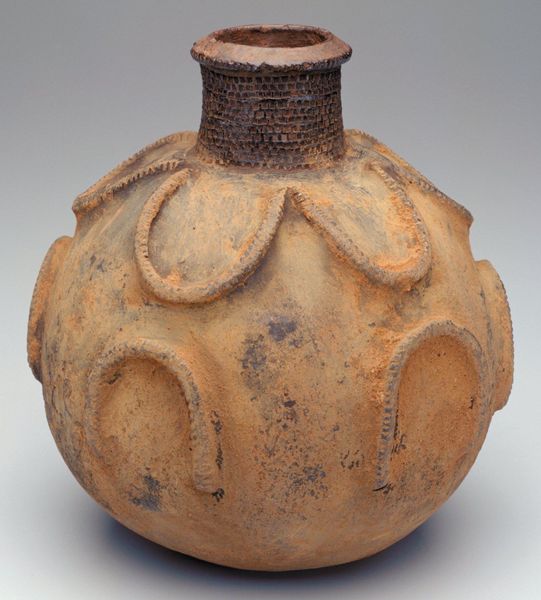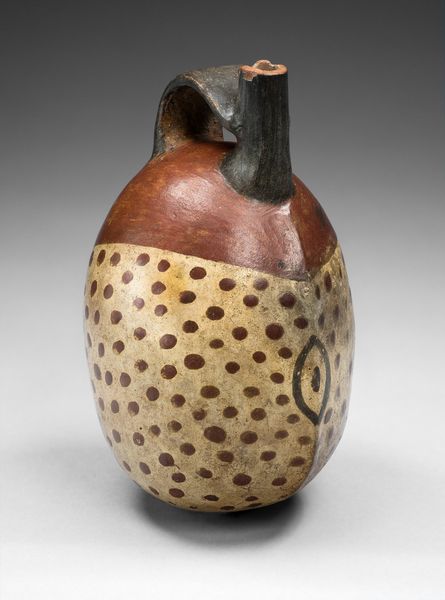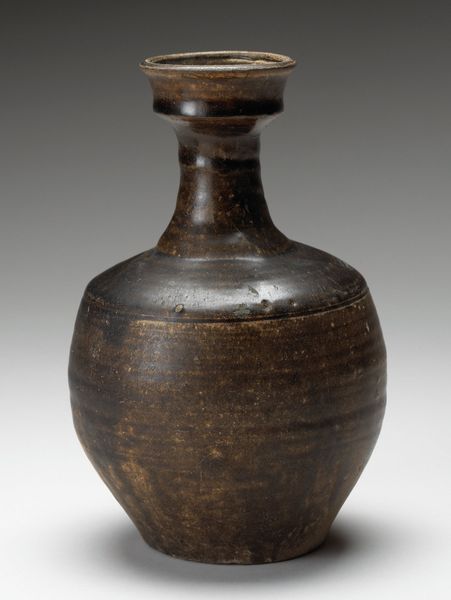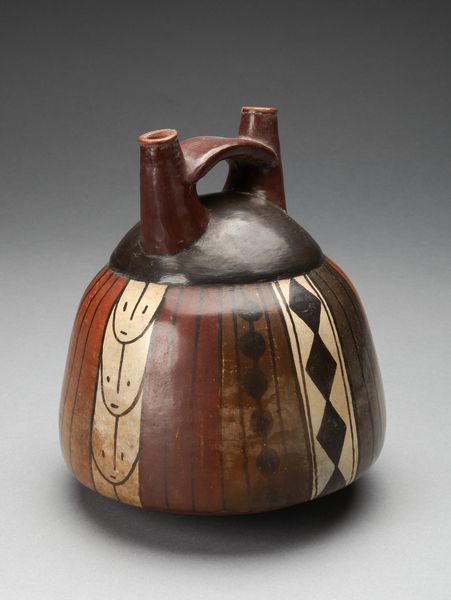
ceramic, earthenware
#
asian-art
#
ceramic
#
abstract
#
earthenware
#
stoneware
#
food art
Dimensions: 10 7/8 x 7 1/8 x 5 3/4 in. (27.62 x 18.1 x 14.61 cm)
Copyright: No Known Copyright
Editor: Here we have a stoneware Bizen Vase, by Konishi Tōdō, from the late 20th century. It strikes me as simultaneously rugged and refined. I’m particularly intrigued by the textural contrast between the smooth, dark surfaces and the rough, light patches. What do you see in this piece? Curator: It is the dichotomy of those surface treatments that invites formal analysis. Note the way the artist utilizes the materiality of the earthenware, not concealing but revealing the process. The tear-drop shape near the vase’s middle adds visual texture and disrupts the form, but how does it relate to the shape of the vessel itself? Editor: Well, the vessel has very precise angles in its basic form, almost cubist. Then those more organic shapes seem like ruptures. Is that intentional? Curator: Precisely! Consider the tension created between the vessel’s angular silhouette and the naturally occurring textures and marks on its surface. Note the rough edges of the mouth contrasting the rounded bottom. It exemplifies a controlled accident. This deliberate act reveals artistic intention within the Bizen tradition. The surface almost appears cracked; does this contrast against or blend with the geometrical nature of the body? Editor: It adds a layer of complexity; it prevents it from feeling too rigid or manufactured. It's a controlled disruption. The glazing technique feels key to creating an element of chance and unpredictability, counteracting any potential harshness from the geometric structure. Curator: Indeed. The intentionality behind the form married to the chaos of the firing result in the visual qualities of the final work. The vase becomes more than just an object; it's a record of process, intention, and material behavior. A harmonious disruption, don't you agree?
Comments
No comments
Be the first to comment and join the conversation on the ultimate creative platform.
